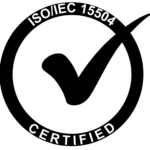- What we do
ENGINEERING
DIGITAL
INDUSTRIES
SOLUTIONS
- Who we are
- Resources
- Contact Us
 Globe | EN
Globe | EN

Introduction: This case study showcases Spanidea’s expertise in the design and verification of a Point of Sale (POS) System-on-Chip (SoC). The project involved RTL design and test bench development for a complex SoC targeting multiple POS applications. Spanidea successfully executed tasks such as design, integration, synthesis, LEC (Logic Equivalence Checking), Spyglass, modifications in I/D$, generation of ARM NIC400 using Adcanvas, integration of M0 processor subsystem, architecture and power estimation, and the development of test benches and test cases for peripheral verification at the subsystem and IP levels. The SoC was implemented on 28 nm TSMC technology.
Case Study Overview:
Objective: Design and verify a complex SoC for multiple POS applications, involving RTL design, test bench development, integration, synthesis, LEC, Spyglass, modifications in I/D$, generation of ARM NIC400 using Adcanvas, integration of M0 processor subsystem, architecture and power estimation, and peripheral verification at subsystem and IP levels.

Get in touch with Spanidea to explore how our software solutions can propel your business forward.




